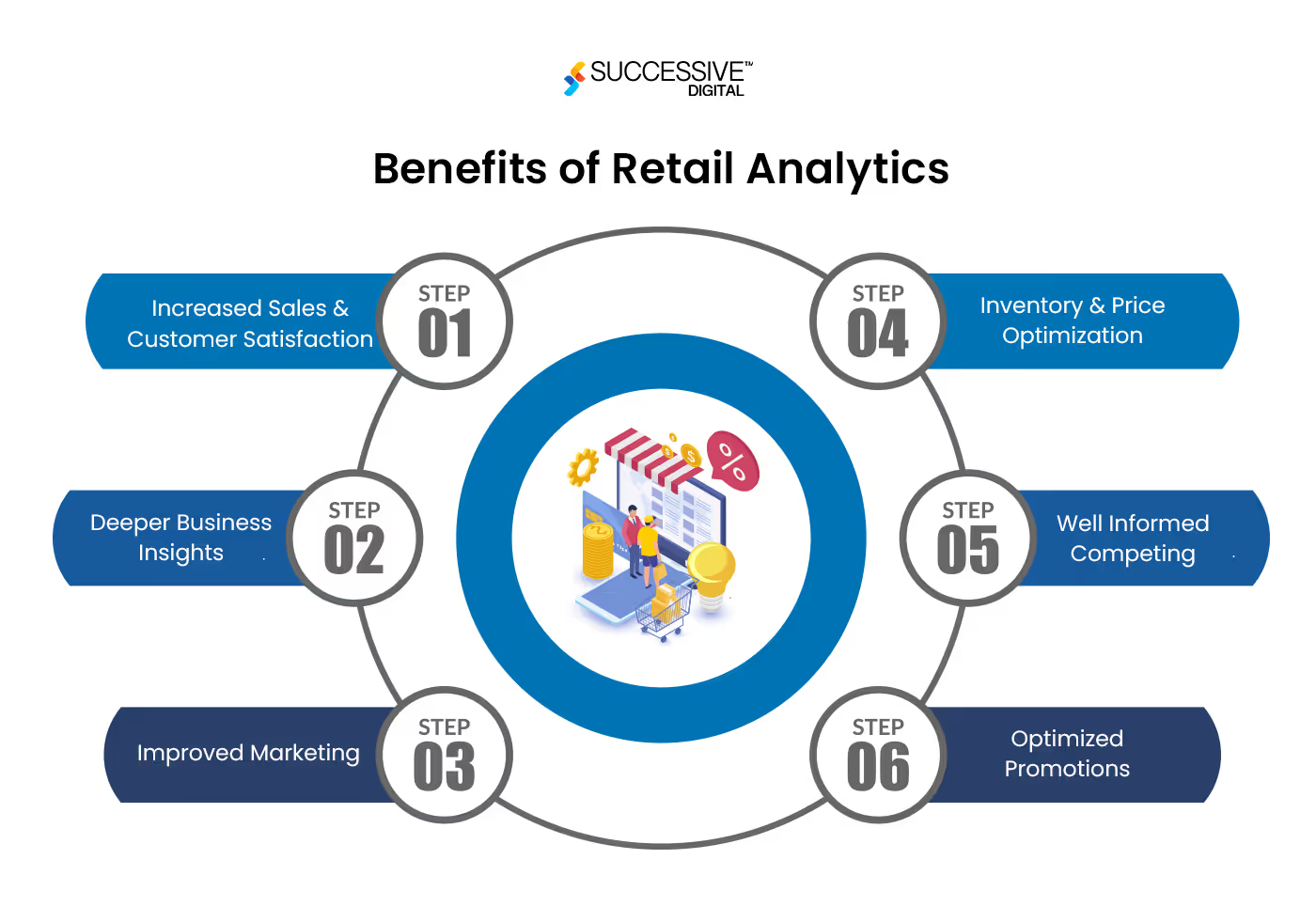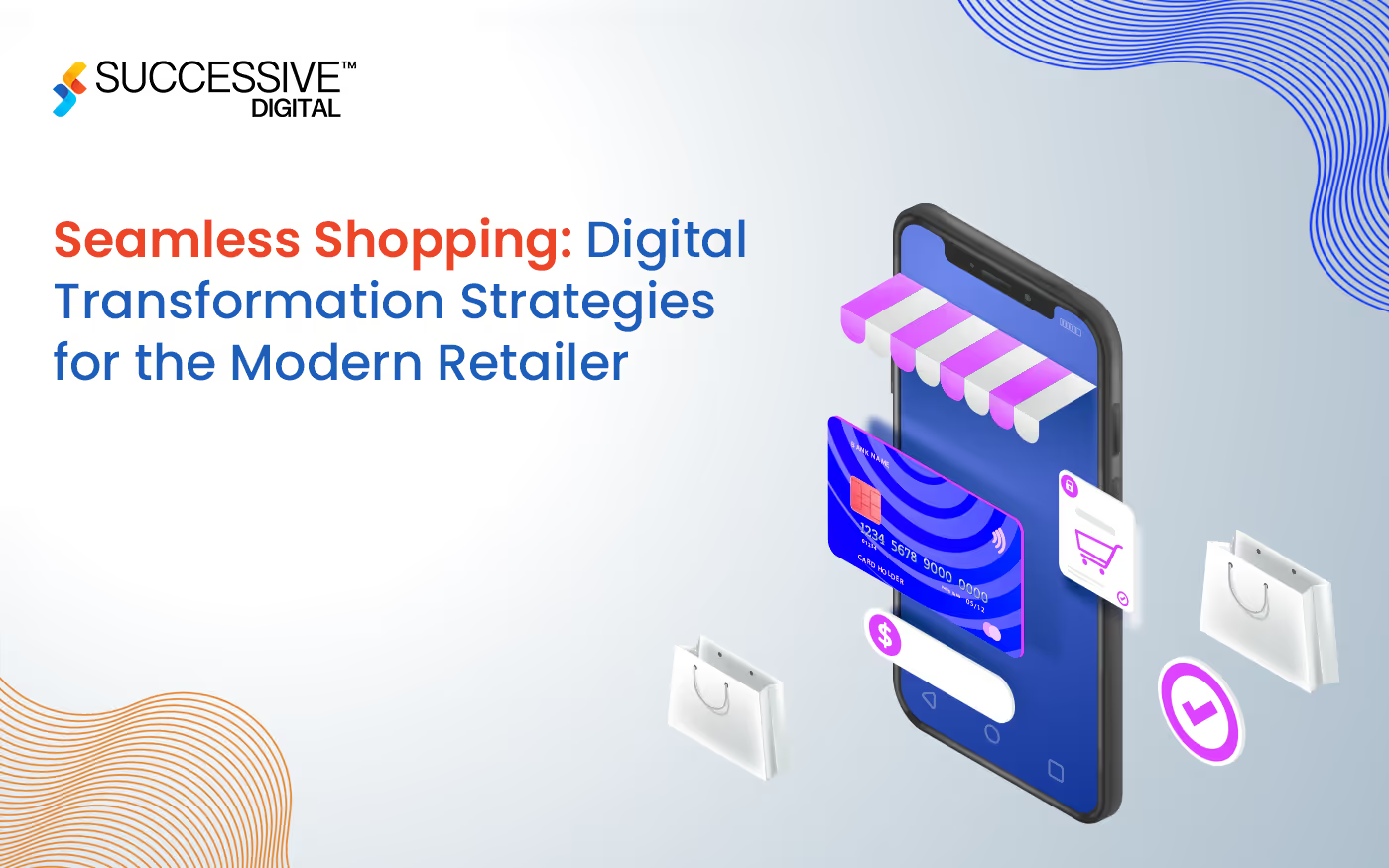As technology continues to grow and the expectations of consumers increases, retailers come across massive challenging situations and revenue possibilities. Modern buyers are not restricted to physical shops; they are digitally adept and anticipate seamless, personalized experiences throughout all platforms: websites, mobile apps, social media, and online marketplaces. This evolution needs a robust digital strategy that should be emphasized in the dynamic retail industry. Most of the relevant methods to implement digital practices include implementing digital strategy best practices that no longer just most effective to meet the immediate revenue goals but also promote sustainability and success.Retailers must adapt to this new digital model by using modern technology and data-driven insights to fulfil and exceed client expectations. This blog explores the know-how of designing a robust digital strategy, by which retailers can lay foundation of a stable technological infrastructure, improving user experiences, and sustainable practices, to position themselves for a long-term success.
Understanding the Digital Customer, Key Consumer Insights:
- Omnichannel Presence: Consumers expect a unified experience across all channels. This means consistent branding, messaging, and customer service whether they are shopping online, via a mobile app, or in a physical store.
- Personalization: Personalized experiences, from product recommendations to targeted marketing campaigns, significantly impact consumer decisions. Leveraging data analytics to understand customer preferences and behaviours is critical.
- Convenience and Speed: Fast and convenient shopping experiences, including easy navigation, quick checkout processes, and reliable delivery options, are crucial for customer retention.
Building a Solid Digital Foundation
Building a solid digital foundation is essential for retailers aiming for a sustainable growth within the competitive market. The first step is selecting a robust e-commerce platform. This platform must handle high site visitor traffic seamlessly, offering essential features like secure payment gateways, user-friendly interfaces, and integrations with customer relationship management (CRM) systems.Mobile optimization is critical in digital transformation offerings, considerably impacting retail achievement. As an extensive range of clients shop for smartphones and tablets, having a mobile-friendly website is crucial for sustainability and growth. This entails more than simply imposing a responsive design; it requires better site load instances and an intuitive consumer interface to enhance mobile buying experience. By prioritizing these factors, brands can be extra handy and attractive to their clients in the long run, for improved engagement and sales.Data analytics is vital in information patron behaviour and making informed decisions in digital strategy best practices. By deploying comprehensive analytics equipment, retailers can monitor patron interactions, examine sales tendencies, and examine the effectiveness of advertising and marketing campaigns. These insights are invaluable, allowing manufacturers to refine techniques to meet customer desires better and improve performance, thereby gaining a competitive benefit within the market.Investing in cybersecurity is non-negotiable. As cyber threats emerge as more sophisticated, defensive consumer facts and maintaining trust are paramount. Robust security features, including encryption, steady sockets layer (SSL) certificates, and regular safety audits, help guard against breaches.By laying this robust virtual basis, outlets can create a resilient, scalable infrastructure that helps ongoing growth and adapts to the ever-changing virtual landscape.

Enhancing the Customer Experience, Best Practices:
- User Experience (UX) Design: Focus on intuitive UX design. Easy navigation, clear calls-to-action, and a smooth checkout process are essential for reducing bounce rates and cart abandonment.
- Personalized Marketing: Utilize data to create personalized marketing campaigns. Email segmentation, personalized product recommendations, and targeted ads can significantly improve conversion rates.
- Customer Support: Offer multiple customer support channels, including live chat, social media, and email. AI-powered chatbots can provide 24/7 assistance and resolve common issues quickly.
Strategies for Integrating Omnichannel Retailing
Implementing a unified commerce platform with digital strategy consulting services is vital for integrating inventory, sales, and user data across all channels, imparting real-time visibility and seamless transitions between online and offline shopping experience. Offering click-and-collect services improves convenience by extending additional features for customers to buy online and pick up in-store, increasing foot visitors to physical stores as a strategy to show them more products. Consistent branding and messaging throughout all channels also beef scale up brand identification, ensuring a cohesive and unified customer experience. This holistic method not only improves operational performance but also fosters consumer loyalty and greater satisfaction, driving growth for the retailer in the long run.
Fostering Customer Loyalty with Digital Reward:
- Rewards and Incentives: Implement loyalty programs that offer rewards, discounts, or exclusive access to new products for repeat customers. This encourages repeat purchases and builds brand loyalty.
- Engagement: Engage customers through personalized communication, social media interactions, and exclusive events. Building a community around your brand can enhance customer loyalty.
- Feedback and Improvement: Regularly collect customer feedback and use it to improve products and services. Demonstrating that you value customer input can strengthen loyalty.
Continuous Innovation and Adaptation
Continuous innovation and digital strategy best practices are essential for staying competitive in the ever-evolving retail landscape. Retailers must often explore new technologies, developments, and purchaser choices to stay ahead. This involves experimenting with new digital transformation services, piloting progressive solutions, and iterating based on feedbacks and performance metrics. Keeping a customer-centric approach ensures that innovations align with marketplace demands. Staying up to date with market trends, workshops, and networking with thought leaders is vital. By fostering a way of agility and continuous improvement, retailers can swiftly respond to adjustments, capitalize on new possibilities, and hold an aggressive edge in the marketplace.
Conclusion
Developing a digital strategy for sustainable retail growth includes knowledge of the digital customer, constructing a stable technological basis, enhancing purchaser experiences, leveraging rising technology, integrating omnichannel retailing, fostering customer loyalty, incorporating sustainable practices, collaborating with a professional company that offers digital strategy consulting services, and constantly innovating. By following these digital strategy best practices, retailers can navigate the complexities of the digital era and achieve long-term success.
.avif)










.jpg)









